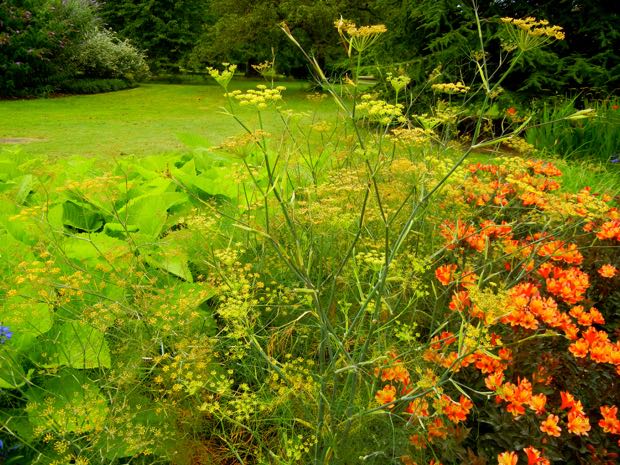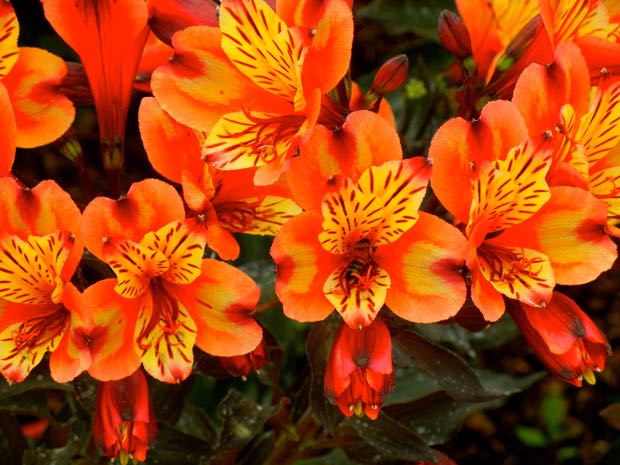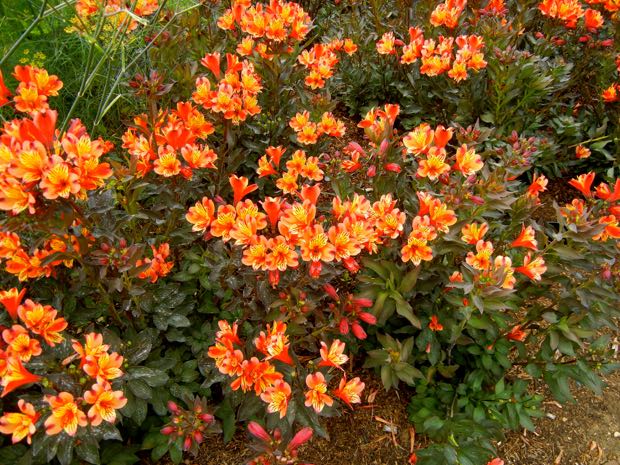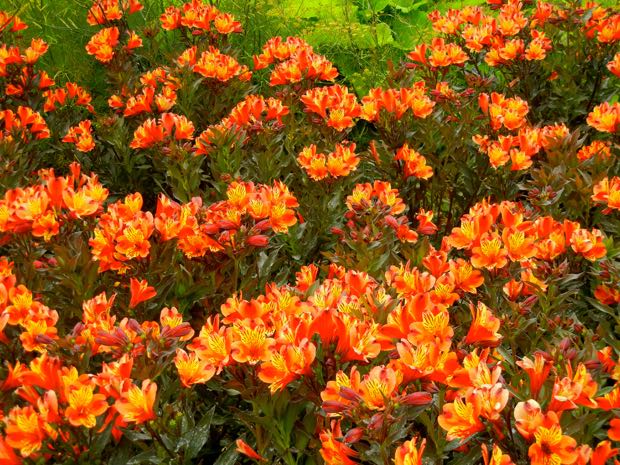Cultivating Alstroemeria ‘Indian Summer’ – A Spectacular Perennial with Vibrant Flowers
Alstroemeria ‘Indian Summer’, also known as Alstroemeria ‘Tesronto’, Peruvian Lily ‘Indian Summer’, Parrot Lily ‘Indian Summer’, or Lily of the Incas ‘Indian Summer’, is a hardy tuberous perennial renowned for its stunning, long-lasting flowers. Native to South America, this plant belongs to the Alstroemeriaceae family. With its bright orange blooms that grace the garden from July to November, Alstroemeria ‘Indian Summer’ is a captivating addition to any landscape.
Growing Alstroemeria ‘Indian Summer’:
Sun and Soil Requirements: Plant Alstroemeria ‘Indian Summer’ in a location that receives full sun or partial shade. It thrives in fertile, well-drained soil. The moisture level is crucial, as the soil should be consistently moist but never waterlogged.
Propagation and Planting: Alstroemeria ‘Indian Summer’ can be propagated through seeds or division. When planting, ensure the tubers are placed in the ground at a depth of about 20 inches (50 cm).
Watering and Fertilizer: Regular watering is essential for Alstroemeria ‘Indian Summer’, particularly during hot and dry summer months. Deep watering should be practiced to encourage deep-root growth. A light application of a balanced fertilizer in the spring will provide the necessary nutrients for healthy growth.
Pests and Diseases: While generally a pest-free plant, Alstroemeria ‘Indian Summer’ may be susceptible to aphids and spider mites. If pests are present, treat them with insecticidal soap or neem oil. Additionally, watch out for anthracnose, a fungal disease that causes black spots on the leaves. If signs of anthracnose are detected, apply a suitable fungicide.
Maintenance:
Cutting Back: After the flowering period, it is recommended to cut back the foliage of Alstroemeria ‘Indian Summer’ either to the ground or to a height of about 6 inches.
Mulching: Applying a layer of mulch around Alstroemeria ‘Indian Summer’ plants helps retain moisture in the soil and suppresses weed growth. Bark, wood chips, or shredded leaves can be used as suitable mulching materials.
Overwintering: In colder climates, where freezing temperatures are a concern, it is necessary to dig up the tubers of Alstroemeria ‘Indian Summer’ and store them in a cool, dry place during the winter months.
With its alluring orange flowers, Alstroemeria ‘Indian Summer’ brings vibrancy and charm to gardens. This easy-to-grow perennial rewards gardeners with its resilience, long flowering season, and ability to attract butterflies and pollinators. By following these guidelines for cultivation and maintenance, you can enjoy the beauty of Alstroemeria ‘Indian Summer’ in your own garden year after year.

Also, read about Alstroemeria ‘Lucas’







